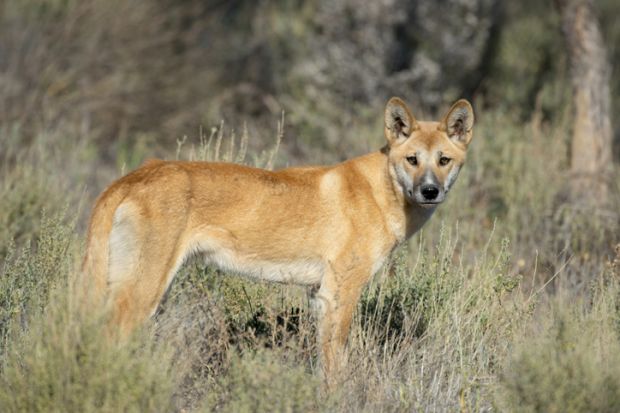When Adelaide psychologist Bradley Smith scoured the internet for guidance on using drones for wildlife research, he found nothing. So he tweeted ecologists he knew, asking if there was “some kind of central resource”.
“Everyone said, ‘No, but there should be,’” said Dr Smith, who researches dog cognition and behaviour at the Central Queensland University (CQU) Adelaide campus.
Drones offer scope for non-invasive research, but unintended consequences abound. They are often targeted by birds of prey, potentially exposing raptors to injury. And a 2015 study found that bears’ heart rates spiked dramatically when drones flew overhead.
Dr Smith, a member of CQU’s animal ethics committee, had been asked to develop standard operating procedures for considering wildlife when using drones. Instead, he assembled an editorial team and spent three years compiling a comprehensive guide on the ethics and practicalities of wildlife research in Australia.
He said that while government agencies had produced resources on various aspects of research in the wild, they were of limited utility. “Every lab does things differently, [and] sometimes there’s confusion around what needs ethics approval.” For example, it is not needed for collecting wild animals’ droppings in Queensland or for working with fish in South Australia.
But disputes between researchers and ethics committees are widespread. “You can have problematic researchers that have certain expectations about how things should happen. Then you have problematic ethics committees. Members [might] have a bee in their bonnet about particular issues or interpret the legislation or animal welfare acts differently.”
Disagreements also arise within committees. When Queensland colleagues proposed catching invasive cane toads from a local golf course for classes on dissection, Dr Smith suggested that they instead ask a local toad control group to donate dead specimens.
“Our job as scientists or teachers isn’t to be pest controllers,” he explained. “Just because they’re cane toads, you can’t go around killing them for science.” But committee members from Queensland had no objection to the proposal, he added.
He said the book aimed to provide multiple perspectives. “If you’re a researcher, these are the things that the committee might be looking for. And vice versa for the committee members, to have some thoughts and considerations about the perspective of researchers. We wanted to get people together to write the considerations that you should follow, from their experience. It’s not a prescriptive manual. How you go about doing [your research], and how you justify it with your ethics application, is up to you.”
He said ethics applications should always consider impacts on animals, if they could be justified and whether alternatives existed. For example, research to estimate dingo populations might involve trapping the animals and fitting them with GPS collars. “Or you can use remote sensor cameras in an array in their territory, snap photographs and do statistics. You can replace a method that’s potentially quite invasive with something that’s low-impact.”
The book also looks at issues of general principle. Dr Smith said researchers might be justified in photographing themselves with animals to present at conferences. But posting such images on Instagram was indefensible.
Single photographs can fuel a “photo frenzy” that harms wildlife populations, research has found. “There’s no scientific reason for taking a selfie, especially if you’re going to post it on social media,” he said. “The public might want to go and get their own.”
Register to continue
Why register?
- Registration is free and only takes a moment
- Once registered, you can read 3 articles a month
- Sign up for our newsletter
Subscribe
Or subscribe for unlimited access to:
- Unlimited access to news, views, insights & reviews
- Digital editions
- Digital access to THE’s university and college rankings analysis
Already registered or a current subscriber?










